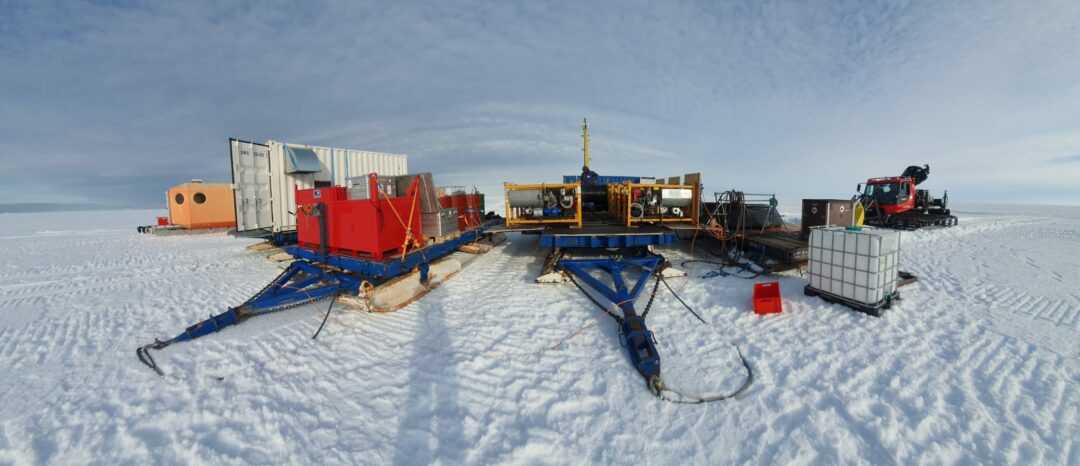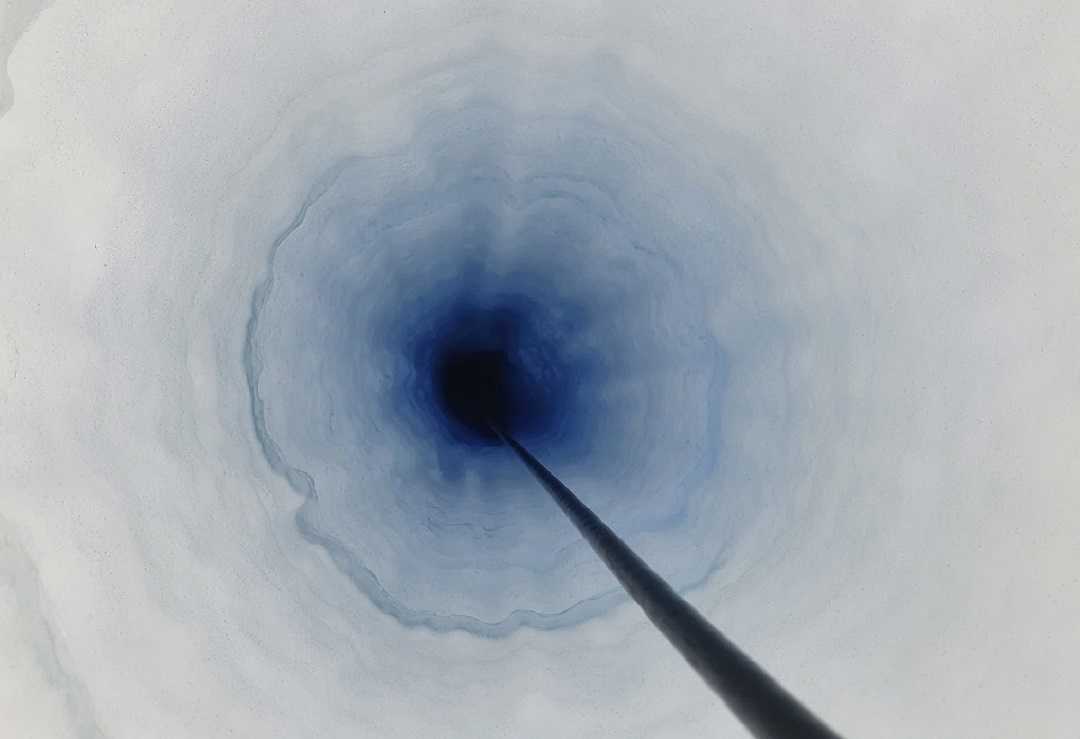Slowly the impressive lance sinks into the ice. It reminds of a Jules Verne-like scientific instrument in the way its copper plates are bolted so craftfully. It is attached to an enormous installation with howling diesel-powered engines that breathes a slow primitive power. Maybe exactly the type of primitive power and patience that is needed to melt through 100m thick shelf ice. We are in the Antarctic standing on the Eckstroem Iceshelf and we are melting holes to finally revive our passive acoustic observatory after a 2-year data gap due to an ice shelf break off in February 2022.

The primitive machine is a hotwater drilling (actually melting) installation from the early eighties, constructed at the time by AWI glaciologists. We were lucky to be able to have it work for us this year, since it could be its last deed with only 4 of 6 engines working reliably still. We were also lucky to have found two fantastic technicians willing to come with us and operate the machine, since there are only few people that know how to tame this monster device.
Before the melting operation begins and the engines start howling, there is an excited tension in the air, all set, everyone ready? The holes we are melting allow us access to the water body underneath the ice shelf. Our first hydrophone is located 1 km from the ice shelf edge and will record the underwater soundscape of the surrounding open ocean. At the same time, the protruding iceshelf shields the hydrophone from the intense iceberg traffic that passes in the adjacent coastal waters, that would otherwise damage our sensor. The hydrophone cable exits the ice to enter an aluminium box, which is packed with heavy car batteries to power the set-up, leaving a modest space for an acoustic recording module and amplifier that together register the hydrophone input to a series of SD cards. The box is buried in a snow shaft next to where the cable exits the ice and will be accessed only every three months by the overwinterers at the Neumayer III Base to exchange its SD cards and batteries. One kilometer to the south, another hydrophone cable is coming out of the ice, one km further south a third one. These two are our spare hydrophones that we also installed this season. They are not connected and still ‘dormant’, serving as the follow-up sensors once the distance to the ice shelf edge becomes critical. As the ice shelf is actually the edge of a large glacier, the whole system is advancing with ca. 150 metres per year towards the ocean, where every once in a while, large pieces break off and drift off as icebergs. The aluminium box can be easily disconnected and moved to the next sensor when needed over time, so that hardware loss (and scientific waste) can be reduced to just the hydrophone.
>> Not only a scientific treasure but also of stunning acoustic beauty, it is my favorite place on earth and it moves me to now be able to listen to this familiar soundscape again. <<
Ilse van Opzeeland
In the days following the melting, the holes slowly close around our cables with which our recordings gain quality. After a noisy start, the data seem to quieten and a familiar soundscape reappears; PALAOA is online again. PALAOA stands for PerenniAL Acoustic Observatory in the Antarctic Ocean. We have been collecting data here since 2006 and it is one of the places with highest acoustic species diversity, with 10 marine mammal species that are reliably detected during their own seasonal acoustic windows. Not only a scientific treasure but also of stunning acoustic beauty, it is my favorite place on earth and it moves me to now be able to listen to this familiar soundscape again. The soundscape is like a sound place where I have spent so much time, listening, counting, describing and categorizing the different sounds that it is made up of. Through the headphones provisionally connected to the hydrophone, we hear Ross seals, icebergs and glacier calving, the bristling of the sea ice melting and every now and then a low frequency sweep from an Antarctic blue whale. A far from home acoustic homecoming.
‘Many thanks to Oliver Roempler, Lukas Wilke and Elke Burkhardt’

